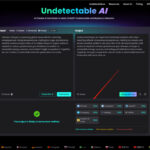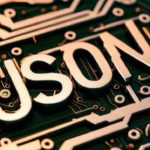License Plate Recognition (LPR) software is an essential part of many sectors today; (for example, government, safety & security, law enforcement, etc) parking / toll road management, fleet management, etc. LPR technology is evolving dramatically since the advent of AI (artificial intelligence), offering more accurate, speedy, and reliable results. The advantages of using AI, machine learning, and computer vision with LPR technology help to revolutionize the way we execute vehicle access, safety & security, and data processing. In this article we will discuss how developments in AI, machine learning, and computer vision contribute to advancements in LPR technology.
What is LPR and how does it work?
License Plate Recognition (LPR) software is a form of automatic number plate recognition (ANPR) technology that uses optical character recognition (OCR) to read vehicle license plates. A LPR system typically works by capturing an image of a vehicle, using a camera at a selected monitoring location (e.g parking lots, toll booths, point of entrances, etc), and then using the LPR software to identify and decode the license plate number.
Historically, LPR systems were accurate, but struggled with certain conditions, such as poor lighting, lower resolution image, or license plates that used unique facing or obscure characters. AI based LPR has resolved some of these challenges, making moving to a much more reliable option regardless of condition.
The role of AI in LPR systems
AI has an important function in increasing the efficacy of the LPR software, especially with respect to computer vision and machine learning applications. These AI applications offer LPR systems an advanced understanding of the images provided by cameras, and therefore make the process of reading license plates more accurate and efficient, regardless of the poor task conditions.
1. Machine Learning for improved accuracy
Using machine learning algorithms allows LPR (License Plate Recognition) software to “learn” over time, and improve its accuracy. When trained on large datasets containing vehicle images, a machine learning model will better detect license plates and read them accurately in conditions that are not optimal.
For example, AI will allow the machine to learn to read different fonts, plate designs and license plates from different countries or regions. In this learning, the AI will make these systems much more effective across different use cases, like reading full plates caked with mud, stationary vehicles in parking lots, moving vehicle license plates on highways, etc.
Example: In circumstances when a vehicle’s license plate is partially obscured by dirt and shadows, an AI-based system could still read the image appropriately because it can predict the missing characters, due to its training. The ability to predict the missing characters from its training allows the LPR system to be much more robust and more accurate than traditional LPR software.
2. Computer vision for better image processing
Computer vision is a vital part of the LPR systems that are powered by AI. It enables the software to be able to process and understand images that security cameras capture. Computer vision algorithms can detect license plates in a larger image frame, and can work moving vehicles and sub-optimal vehicle viewing angles (larger vehicle frame).
Computer vision systems are not limited to only capturing a blurred license plate image of a vehicle, rather image enhancement algorithims increase resolution to allow for clearer image identification of plate numbers. Due to unfavourable lighting (bright sunlight or during the night-time), the AI algorithms can leverage image enhancement techniques of brightness and contrast to create clear images for identification of license plates
For example, AI systems not only differentiate between a vehicle’s license plate against substantial background distractions, it will crop the image for you and only store the image of the license plate for faster processing.
3. Real-time analysis for speed and efficiency
In many real-world applications, speed is essential for LPR systems. Whether it’s managing parking lot access or enforcing traffic laws, LPR systems must process license plates quickly and accurately to ensure smooth operations. AI-powered systems like Coram AI can analyze the data in real-time, processing images faster than traditional systems. Coram AI uses machine learning models to continuously adjust and improve its detection algorithms, reducing errors and enhancing the system’s efficiency.
This real-time adaptability ensures that AI-powered LPR systems can work quickly while maintaining high levels of accuracy, providing an immediate response to security threats or traffic management tasks.
4. Data integration and Cloud connectivity
New LPR software – the kind that captures and reads license plates – not only captures and reads license plates but also connects to other systems and produces robust features for vehicle tracking, access control, and incident reporting. AI enables integration by tying LPR data to cloud storage, enterprise management systems, and other security technologies.
AI can also be used for processing and categorizing vehicle data, including identifying parking violations and tracking vehicles crossing the camera feed of an existing camera at various locations. This data integration can benefit an assortment of industries such as law enforcement, parking enforcement, and logistics management.
Benefits of AI-enhanced LPR systems
1. Increased accuracy
When AI is utilized within an LPR system, you’re assured accuracy — the system will read almost any license plate regardless of the design or condition of that plate!
2. Improved speed
Thanks to artificial intelligence (AI), LPR systems can now process data at super high rates, allow for access control in seconds and immediately respond to an emerging potential security threat.
3. Enhanced reliability
AI holds the promise of extending the reliability of an LPR system at a time when vehicles are moving, under limited ambient light, or during inclement weather.
4. Scalable solutions
AI-based LPR systems are highly scalable — as industries like transportation and logistics, and smart cities grow in scope and scale, LPR technology can respond by easily deploying LPR systems in areas where it is needed most. AI-based LPR systems can be easily diversified across the interfaces of other security tools, such as access control systems to see more of the security environment.
5. Cost relief
AI now enhances LPR systems capabilities by solving some complex tasks associated with image enhancement, real-time analysis and pattern discovery. By utilizing AI technologies, businesses will employ fewer staff to monitor or intervene, which translates to lower security costs.
Conclusion
In today’s world, software with AI-driven License Plate Recognition (LPR) abilities is changing the game with respect to security, traffic management, and efficiency of operations. With the combination of advanced machine learning, computer vision, and processing capabilities able to handle data in real-time, LPR systems can identify license plates quickly and accurately, under difficult conditions. From parking management, law enforcement, and access control, AI-initiated LPR software gives businesses and authorities faster, more reliable solutions to security situations.
As LPR systems will continue to develop, the incorporation of AI will continue to develop by using advanced technology to provide smarter, better-efficient solutions for various applications. The future of tracking vehicles, as well as monitoring access control is definitely built with the use of AI technology, which is a monumental advancement for any industry requiring accurate data in real-time.










Leave a Reply